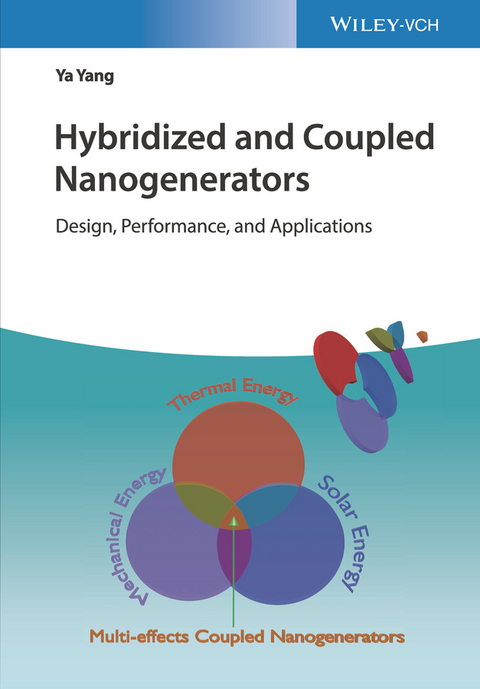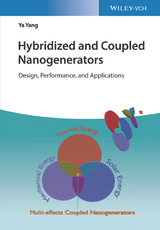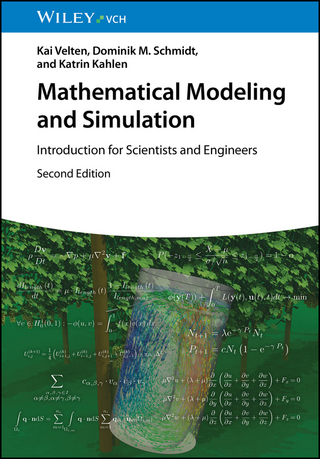Hybridized and Coupled Nanogenerators
Wiley-VCH (Verlag)
978-3-527-34634-9 (ISBN)
Ya Yang is currently Research Scientist at Beijing Institute of Nanoenergy and Nanosystems, Chinese Academy of Sciences, China. After his PhD from University of Science and Technology Beijing, China, he worked as a postdoctoral researcher in Georgia Institute of Technology, USA. His research interests include the hybridized nanogenerators, self-powered sensors, solar cells, and Li-ion batteries. He has published more than 120 Journal articles and holds 30 patents.
1 OVERVIEW
1.1 Introduction
1.2 Hybridized nanogenerators
1.3 Coupled nanogenerators
1.4 Applications
1.5 Conclusion and prospects
2 WIND-DRIVEN TRIBOELECTRIC NANOGENERATORS
2.1 Introduction
2.2 Conventional wind harvester
2.3 Triboelectric nanogenerators for scavenging wind energy
2.4 Comparison
2.5 Conclusion
3 ELECTROMAGNETIC-TRIBOELECTRIC HYBRIDIZED NANOGENERATORS
3.1 Introduction
3.2 Working mechanisms
3.3 Hybridized devices structure and working mechanisms
3.4 Materials
3.5 Performance
3.6 Applications
3.7. Summary and perspectives
4 OTHER HYBRIDIZED NANOGENERATORS
4.1 Introduction
4.2 Hybridized photoelectric and piezoelectric nanogenerator
4.3 Hybridized photoelectric and triboelectric nanogenerator
4.4 Hybridized photoelectric and pyroelectric nanogenerator
4.5 Conclusions and Prospects
5 HYBRIDIZING NANOGENERATORS AND SENSORS
5.1 Introduction
5.2 Materials
5.3 Design of self-powered sensors
5.4 Performance
5.5 Applications
5.6 Conclusion and Prospects
6 HYBRIDIZING NANOGENERATORS AND ENERGY STORAGE DEVICES
6.1 Introduction
6.2 Working Mechanisms
6.3 Materials
6.4 Devices Structure and Design
6.5 Performance
6.6 Applications
6.7 Conclusions and Prospects
7 PYROELECTRIC AND THERMOELECTRIC NANOGENERATORS
7.1 Introduction
7.2 Working Mechanisms
7.3 Progress of Pyroelectric Nanogenerators
7.4 Progress of Thermoelectric Nanogenerators
7.5 Conclusions and Prospects
8 PHOTOVOLTAIC-PYROELECTRIC COUPLED EFFECT NANOGENERATORS
8.1 Introduction
8.2 Basic Principle
8.3 Materials
8.4 Device Design
8.5 Performance
8.6 Applications
8.7 Conclusions and Prospects
9 MUTI-EFFECTS COUPLED NANOGENERATORS
9.1 Introduction
9.2 Materials
9.3 Device Design and Working Principle
9.4 Performance
9.5 Applications
9.6 Conclusions and Prospects
10 COUPLED NANOGENERATORS FOR NEW PHYSICAL EFFECTS
10.1 Introduction
10.2 Pyro-phototronic effect
10.3 Ferro-pyro-phototronic effect
10.4 Thermo-phototronic effect
10.5 Conclusions and Prospects
| Erscheinungsdatum | 03.12.2020 |
|---|---|
| Verlagsort | Weinheim |
| Sprache | englisch |
| Maße | 170 x 244 mm |
| Gewicht | 882 g |
| Themenwelt | Naturwissenschaften ► Chemie |
| Technik ► Elektrotechnik / Energietechnik | |
| Technik ► Maschinenbau | |
| Schlagworte | Components & Devices • Electrical & Electronics Engineering • Elektrotechnik u. Elektronik • Energie • Energy • Erneuerbare Energien • Komponenten u. Bauelemente • Materialien f. Energiesysteme • Materials for Energy Systems • Materials Science • Materialwissenschaften • renewable energy |
| ISBN-10 | 3-527-34634-1 / 3527346341 |
| ISBN-13 | 978-3-527-34634-9 / 9783527346349 |
| Zustand | Neuware |
| Informationen gemäß Produktsicherheitsverordnung (GPSR) | |
| Haben Sie eine Frage zum Produkt? |
aus dem Bereich




